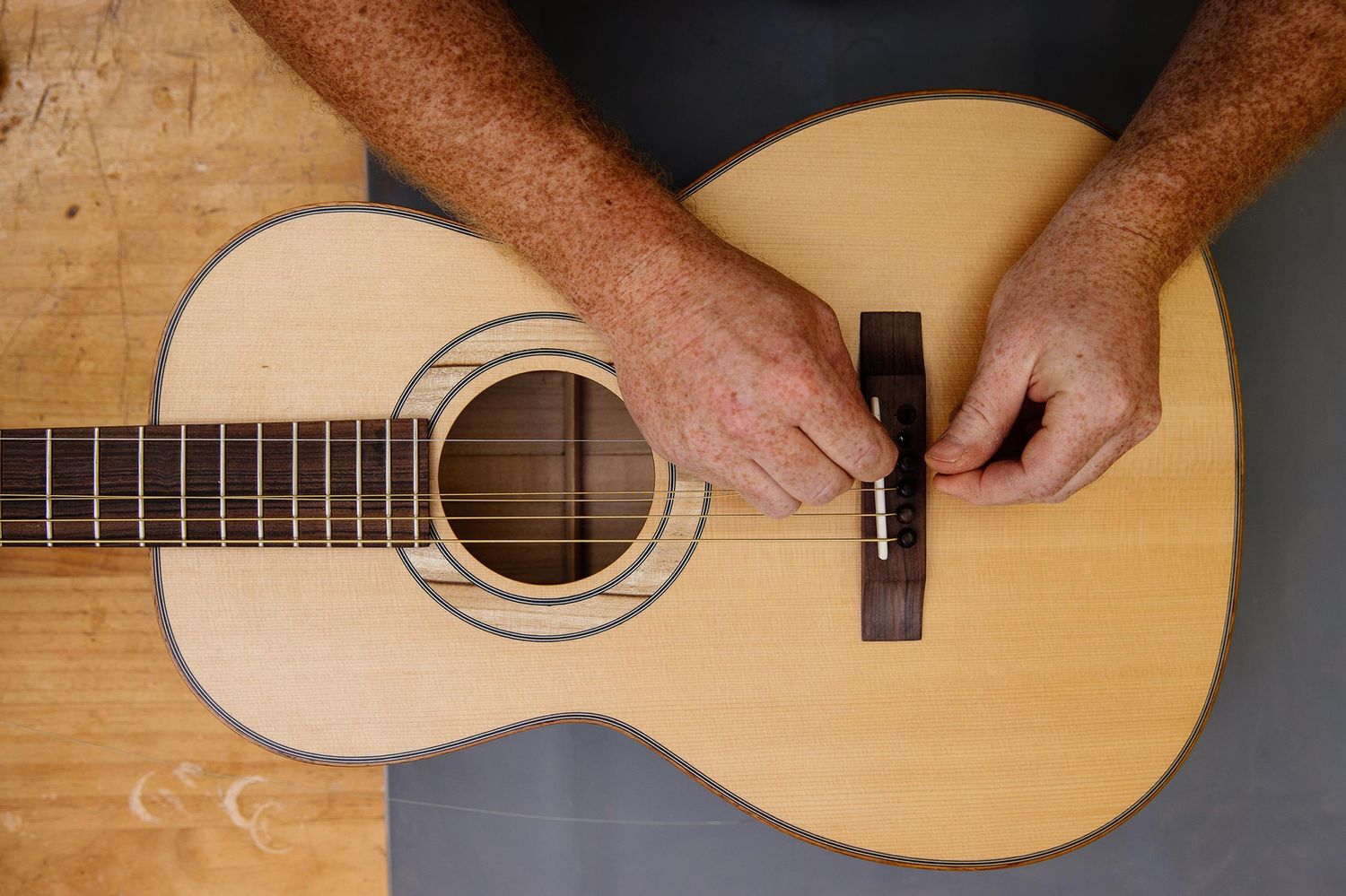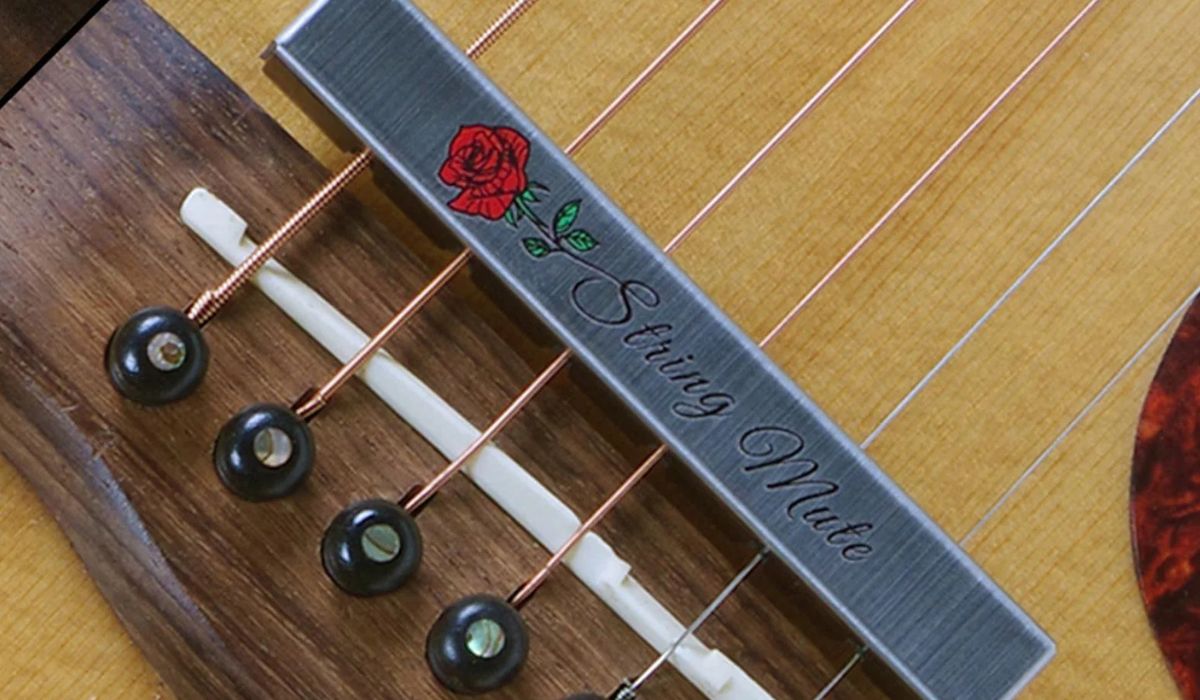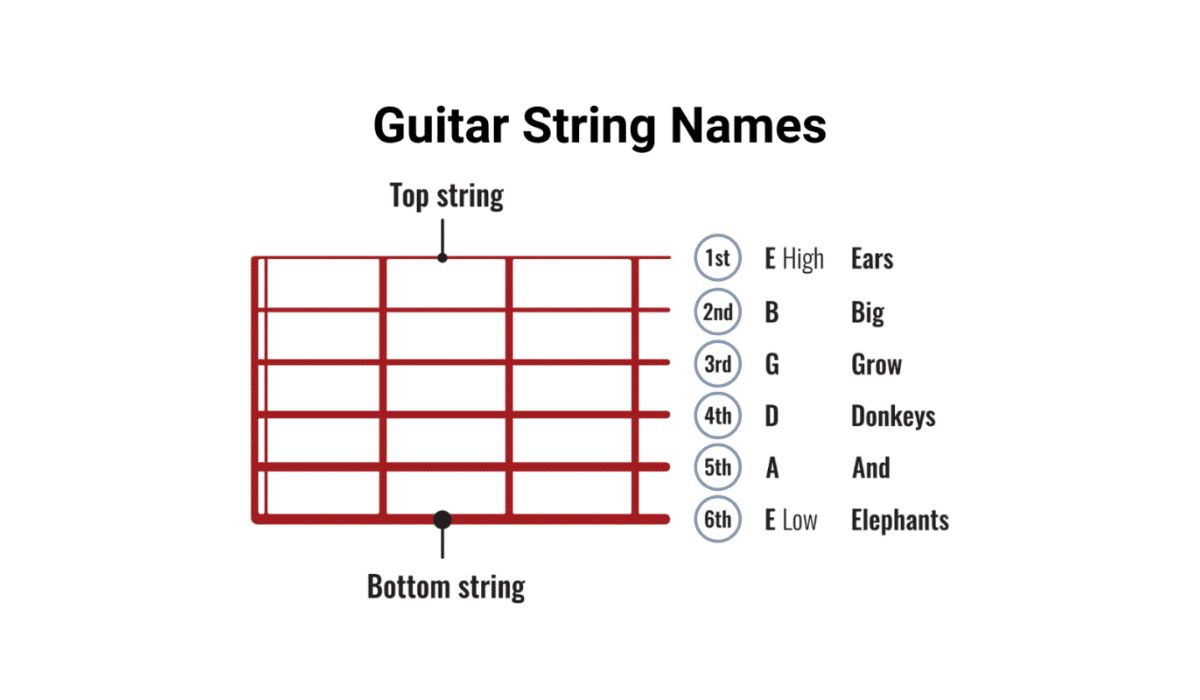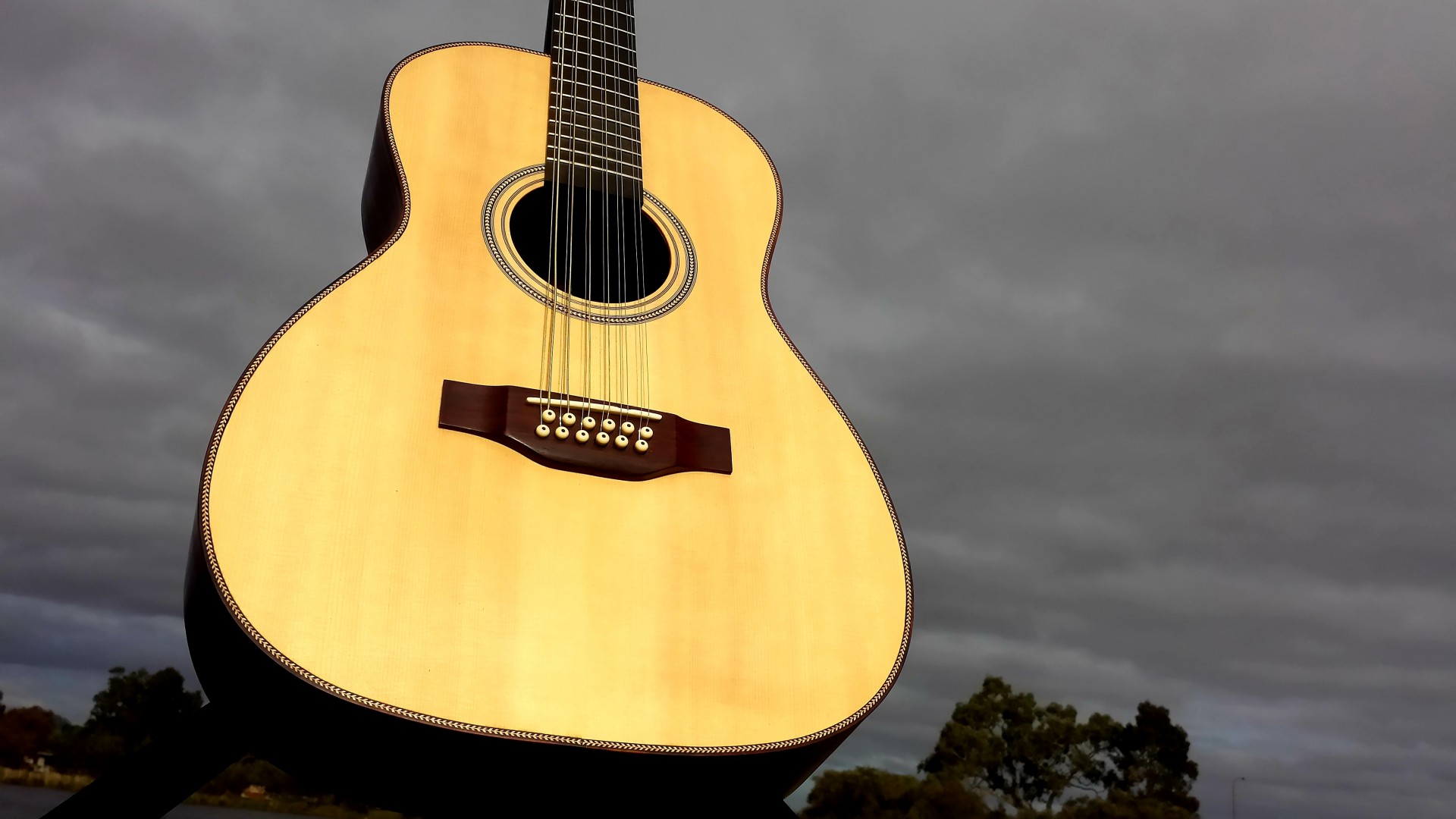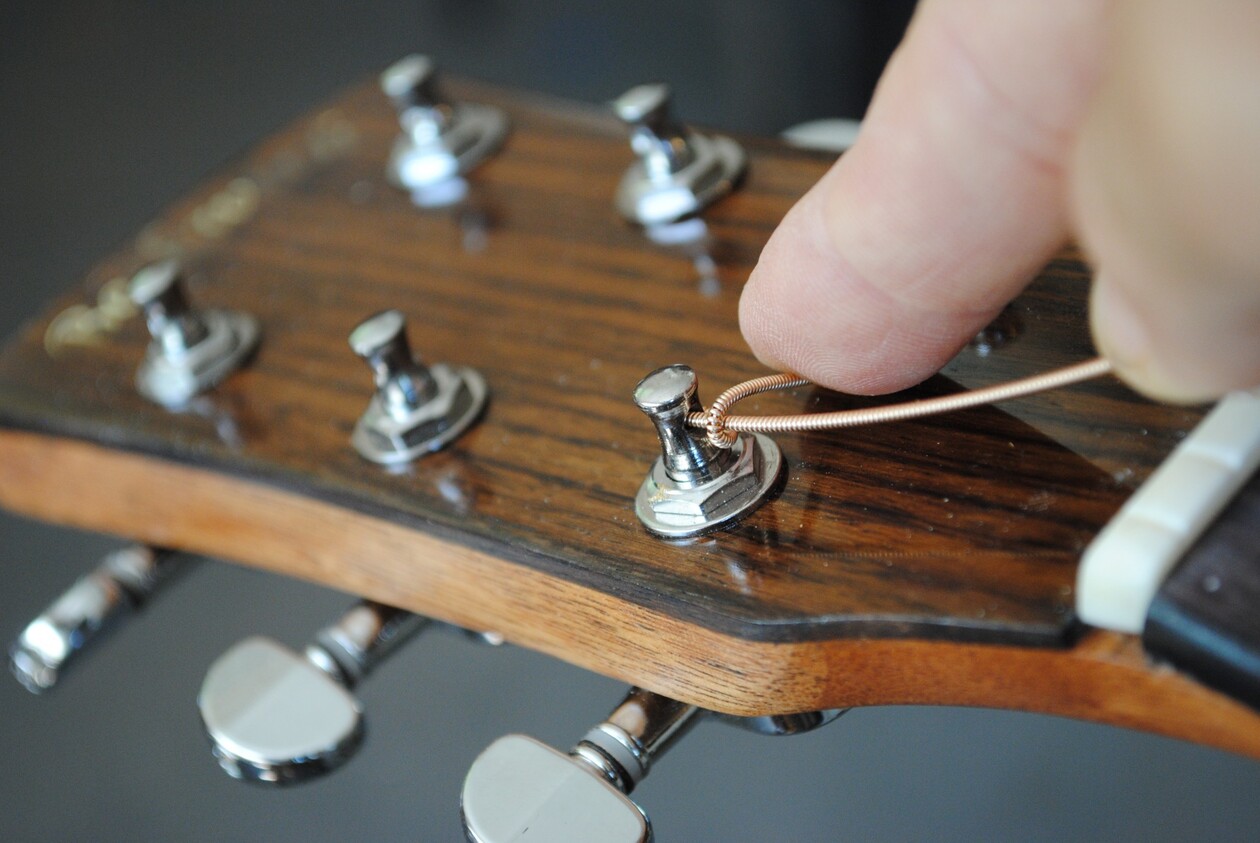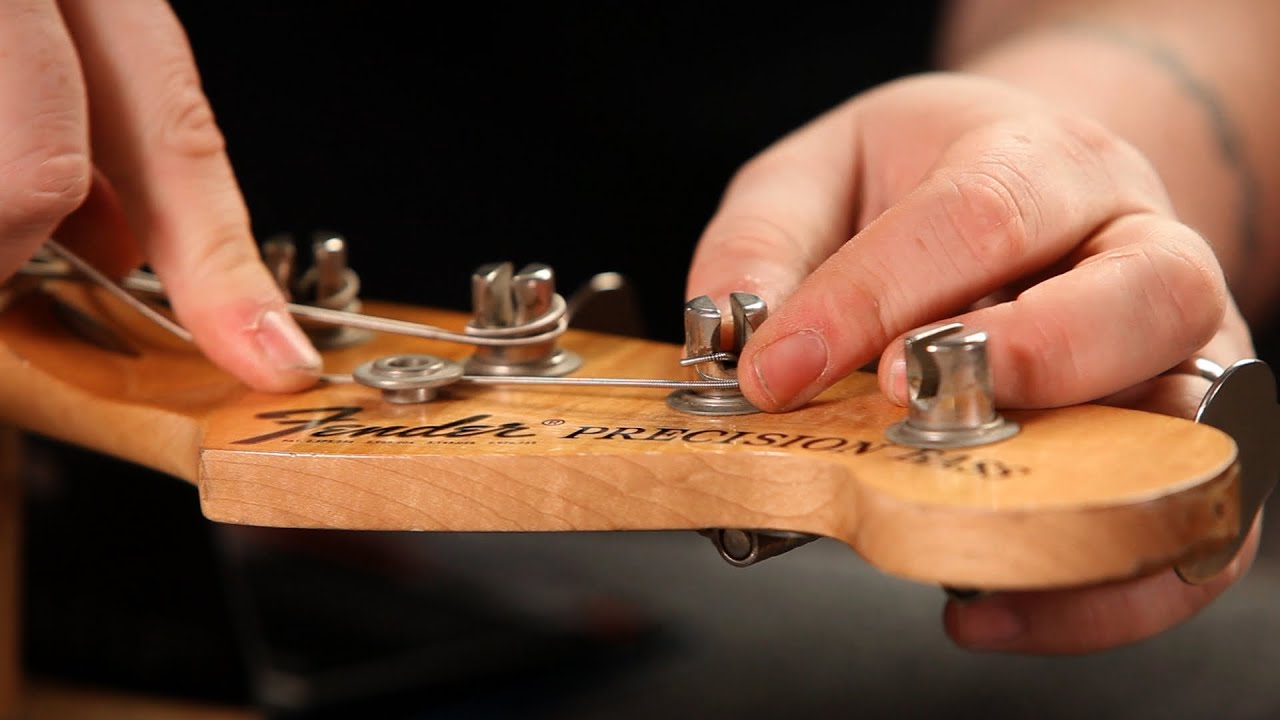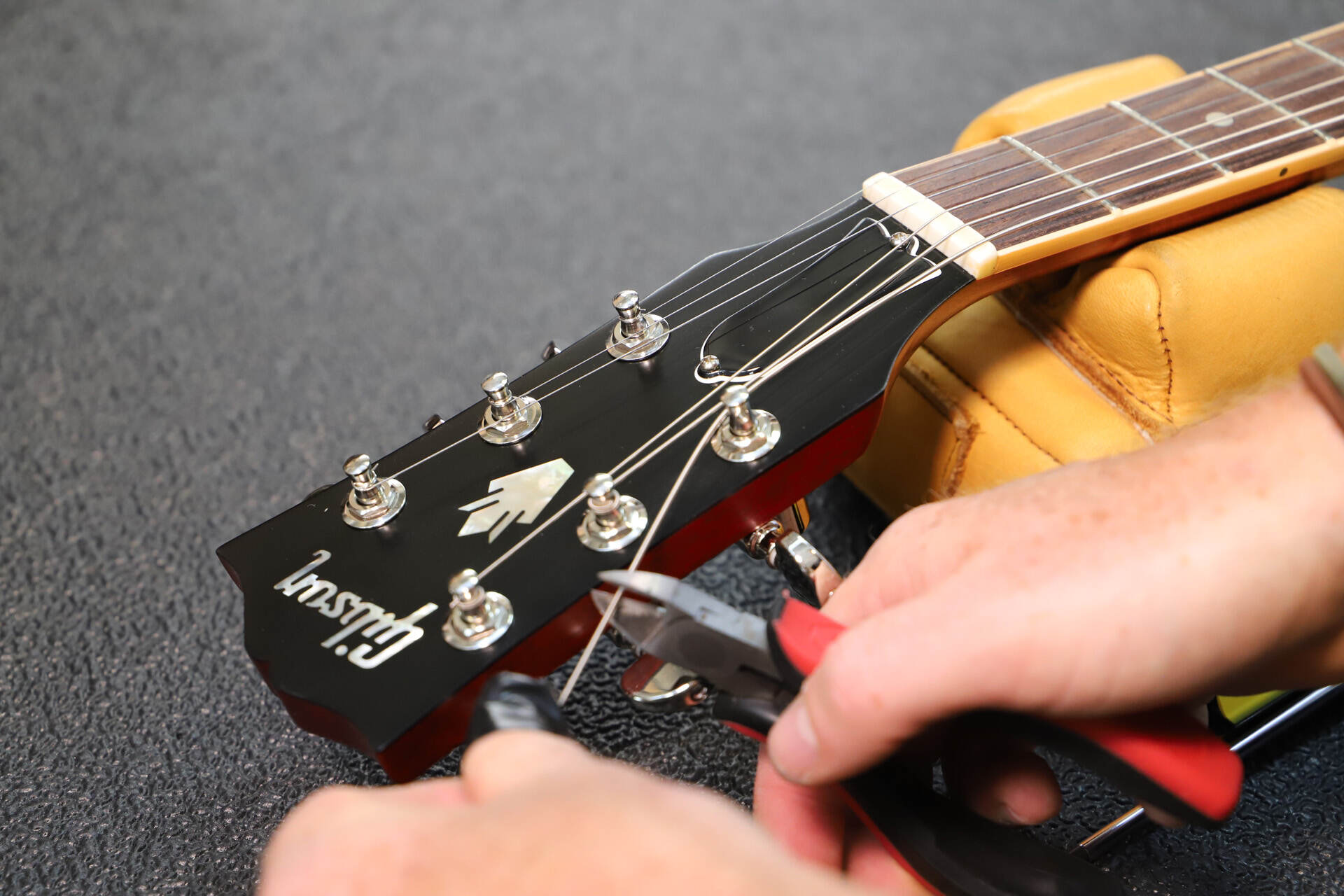Home>Instruments>Guitar>What Strings Are On A Guitar


Guitar
What Strings Are On A Guitar
Published: February 15, 2024
Learn about the different types of guitar strings and find the best ones for your instrument. Discover the importance of choosing the right strings for your guitar.
(Many of the links in this article redirect to a specific reviewed product. Your purchase of these products through affiliate links helps to generate commission for AudioLover.com, at no extra cost. Learn more)
Introduction
Introduction
When it comes to playing the guitar, the strings are the heart and soul of the instrument. They are the medium through which your emotions and creativity flow, producing the beautiful melodies and harmonious chords that captivate the listener. Understanding the different types of guitar strings is crucial for every guitarist, as it directly impacts the instrument’s tone, playability, and overall sound.
There are various types of guitar strings available, each with its own unique characteristics and advantages. From steel to nylon, coated to uncoated, and varying gauges, the options can be overwhelming for beginners and experienced guitarists alike. In this comprehensive guide, we will delve into the world of guitar strings, exploring the different types, materials, and considerations to help you make an informed decision about which strings are best suited for your playing style and musical preferences.
Whether you’re a seasoned guitarist looking to experiment with new tones or a beginner navigating the vast array of string options, this guide will equip you with the knowledge to confidently select the perfect strings for your guitar, enhancing your playing experience and musical expression.
Steel Strings
Steel Strings
Steel strings are synonymous with the bright, crisp tones that have become a hallmark of many popular music genres, including rock, country, and pop. These strings are crafted from high-carbon steel, providing durability and a vibrant sound that resonates with clarity and definition. The unwound strings are typically made of a single strand of steel, while the wound strings feature a steel core wrapped in a thin layer of another metal, such as nickel or stainless steel.
One of the defining characteristics of steel strings is their versatility, making them well-suited for both acoustic and electric guitars. Acoustic steel strings are known for their robust projection and articulate clarity, ideal for strumming and fingerstyle playing. On the other hand, electric steel strings offer exceptional responsiveness and sustain, allowing for dynamic expression and seamless bending and vibrato techniques.
It’s important to note that steel strings exert more tension on the guitar’s neck and top, requiring a guitar specifically designed to handle the increased stress. Attempting to use steel strings on a guitar not built for them can result in damage to the instrument. Therefore, when considering steel strings, it’s essential to verify that your guitar is equipped to accommodate their higher tension.
Furthermore, steel strings are available in various gauges, ranging from light to heavy. Lighter gauges offer ease of playability and are well-suited for beginners and those who prefer a more delicate touch, while heavier gauges provide added volume and a robust tonal foundation, favored by players who require enhanced projection and a fuller sound.
Whether you’re drawn to the vibrant resonance of acoustic steel strings or the dynamic versatility of electric steel strings, understanding the nuances of each type will empower you to select the ideal set to complement your playing style and musical aspirations.
Nylon Strings
Nylon Strings
Renowned for their warm, mellow tones and gentle feel under the fingers, nylon strings have long been associated with classical and flamenco guitars. Crafted from nylon and often reinforced with varying degrees of tension, these strings offer a distinct sound that is favored by musicians seeking a rich, expressive timbre.
One of the defining characteristics of nylon strings is their softer touch, making them particularly well-suited for fingerstyle playing and intricate picking techniques. The reduced tension compared to steel strings allows for greater flexibility and a more forgiving playing experience, ideal for beginners and experienced guitarists alike.
Beyond classical and flamenco styles, nylon strings are also embraced in genres such as folk, jazz, and certain acoustic arrangements, where their gentle tonal qualities and nuanced articulation enhance the musical expression. Additionally, the mellower sound of nylon strings can be an appealing choice for players seeking a more subdued and introspective sonic palette.
It’s important to note that nylon strings are designed for classical and flamenco guitars, which feature specific structural attributes to accommodate their lower tension. Attempting to install nylon strings on a guitar designed for steel strings can lead to instability and improper intonation, potentially causing damage to the instrument. Therefore, when considering nylon strings, it’s essential to ensure that your guitar is compatible with this string type.
Furthermore, nylon strings are available in different tensions, offering players the flexibility to tailor their playing experience to their preferences. Lower tension strings provide a lighter touch and effortless playability, while higher tension strings offer added projection and a more robust tonal foundation, catering to diverse playing styles and musical contexts.
Whether you’re drawn to the expressive warmth of classical nylon strings or the nuanced articulation of flamenco nylon strings, understanding the unique characteristics of this string type will empower you to select the perfect set to enrich your musical journey and elevate your playing experience.
Coated Strings
Coated Strings
Coated strings represent a remarkable advancement in string technology, offering extended longevity and consistent performance. These strings feature a thin polymer coating, such as polytetrafluoroethylene (PTFE) or polyester, which serves as a protective barrier against corrosion, dirt, and oil from the player’s fingers. This innovative design not only prolongs the lifespan of the strings but also preserves their tone and playability over an extended period.
One of the primary benefits of coated strings is their resistance to tarnishing and buildup of grime, resulting in a smoother feel under the fingers and a reduction in string squeak during playing. This is particularly advantageous for performers who engage in lengthy playing sessions or frequently perform in diverse environmental conditions, as coated strings offer reliability and consistency in tone and responsiveness.
Moreover, the protective coating minimizes the accumulation of sweat and oils on the string surface, mitigating the detrimental effects of moisture and enhancing the overall durability of the strings. As a result, coated strings are an appealing choice for players seeking a low-maintenance solution that delivers enduring performance without compromising on sound quality.
It’s important to note that coated strings are available for both acoustic and electric guitars, catering to a wide range of musical styles and playing preferences. Whether you favor the bright resonance of acoustic coated strings or the dynamic articulation of electric coated strings, the enhanced durability and resilience of coated strings make them a valuable asset for any guitarist.
Furthermore, coated strings are available in various gauges and materials, allowing players to customize their tonal characteristics and playability to suit their individual preferences. Whether you prioritize a balanced tonal profile, enhanced sustain, or effortless bending and vibrato, coated strings offer a versatile solution to elevate your playing experience and musical expression.
Whether you’re seeking prolonged string longevity, consistent performance, or a low-maintenance solution, exploring the innovative design and enduring benefits of coated strings will empower you to make an informed choice that enhances your playing experience and resonates with your musical aspirations.
String Gauges
String Gauges
String gauges play a pivotal role in shaping the playability, tone, and overall feel of a guitar. The gauge refers to the thickness of the strings, typically measured in thousandths of an inch. Different string gauges offer distinct playing experiences, tonal characteristics, and responsiveness, allowing guitarists to tailor their instrument’s feel and sound to suit their playing style and musical preferences.
Lighter gauge strings, characterized by their thinner diameters, offer ease of playability and a more delicate touch under the fingers. They require less finger pressure to fret notes and execute bends and vibrato, making them well-suited for beginners, fingerstyle players, and those seeking a more effortless playing experience. Additionally, lighter gauge strings produce a brighter and more responsive tone, ideal for genres that demand articulate clarity and nuanced expression.
Conversely, heavier gauge strings feature thicker diameters, providing added volume, sustain, and a robust tonal foundation. The increased tension and mass of heavier gauge strings yield a fuller and more resonant sound, making them a preferred choice for genres that require enhanced projection and a bold sonic presence, such as blues, rock, and heavy metal.
Furthermore, the choice of string gauge is closely linked to the guitar’s setup and construction. Lighter gauge strings exert less tension on the instrument’s neck and top, making them suitable for guitars with delicate bracing and structural components. In contrast, heavier gauge strings require a sturdier build to withstand the increased stress, making them better suited for guitars designed to accommodate their higher tension.
It’s important to note that string gauge preferences are subjective and can vary based on individual playing styles, finger strength, and musical genres. Experimenting with different string gauges can provide valuable insights into the tonal nuances and playing dynamics offered by each gauge, empowering guitarists to fine-tune their instrument to align with their artistic vision and sonic aspirations.
Whether you’re drawn to the responsive clarity of lighter gauge strings or the commanding resonance of heavier gauge strings, understanding the impact of string gauges on playability and tone will enable you to make informed decisions that elevate your playing experience and resonate with your musical identity.
Conclusion
Conclusion
Exploring the diverse landscape of guitar strings unveils a world of sonic possibilities and tactile experiences, each string type offering a unique blend of tonal characteristics, playability, and expressive potential. Whether you gravitate toward the vibrant resonance of steel strings, the warm mellowness of nylon strings, or the enduring performance of coated strings, understanding the nuances of each type empowers you to curate your instrument’s voice to harmonize with your musical vision.
As you navigate the realm of guitar strings, consider the interplay of materials, tensions, and gauges, recognizing the profound impact these elements have on your playing dynamics and sonic palette. Embrace the opportunity to experiment with different string types, allowing your musical journey to unfold through the exploration of diverse tonal textures and responsive nuances.
Furthermore, remember that the choice of guitar strings is deeply personal, reflecting your artistic sensibilities and sonic aspirations. Whether you seek vibrant articulation, expressive warmth, enduring resilience, or a harmonious blend of these qualities, the world of guitar strings offers a myriad of options to elevate your playing experience and enrich your musical expression.
Ultimately, the journey of selecting guitar strings transcends technical specifications, resonating as a testament to your musical identity and the sonic stories you aspire to tell. Embrace the artistry of string selection, allowing your instrument to become an extension of your creativity and a conduit for your musical narrative.
May your exploration of guitar strings kindle a symphony of inspiration, guiding you toward the perfect harmonies that resonate with your soul and captivate the hearts of listeners. Let the strings be the threads that weave your musical tapestry, each note a brushstroke in the masterpiece of your artistic journey.

